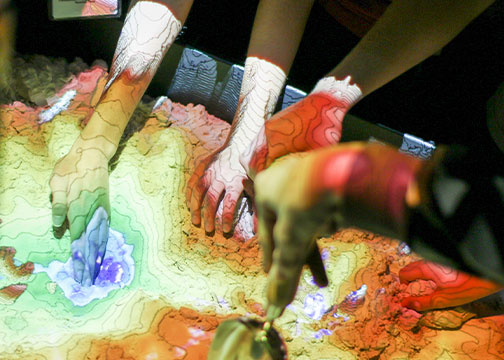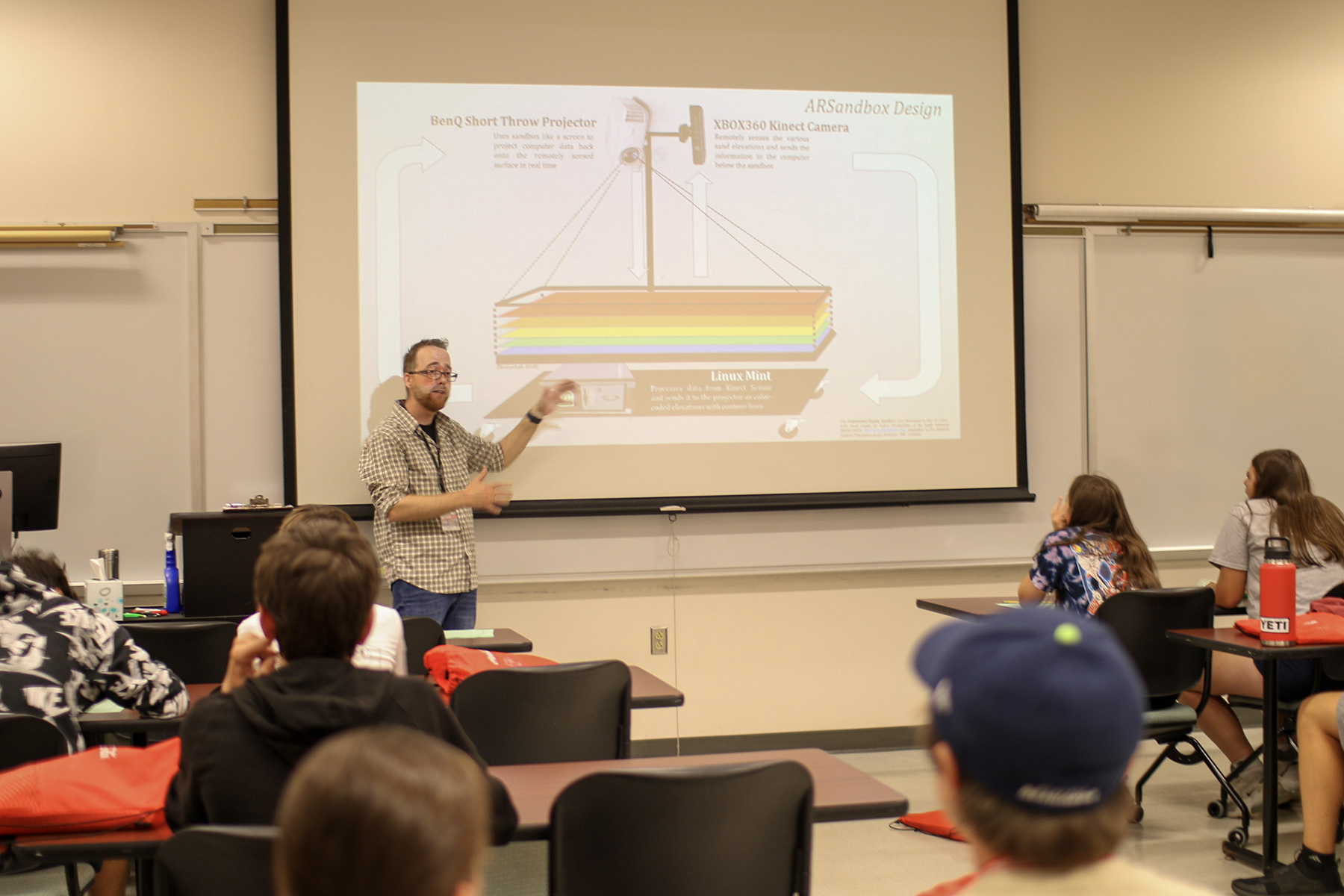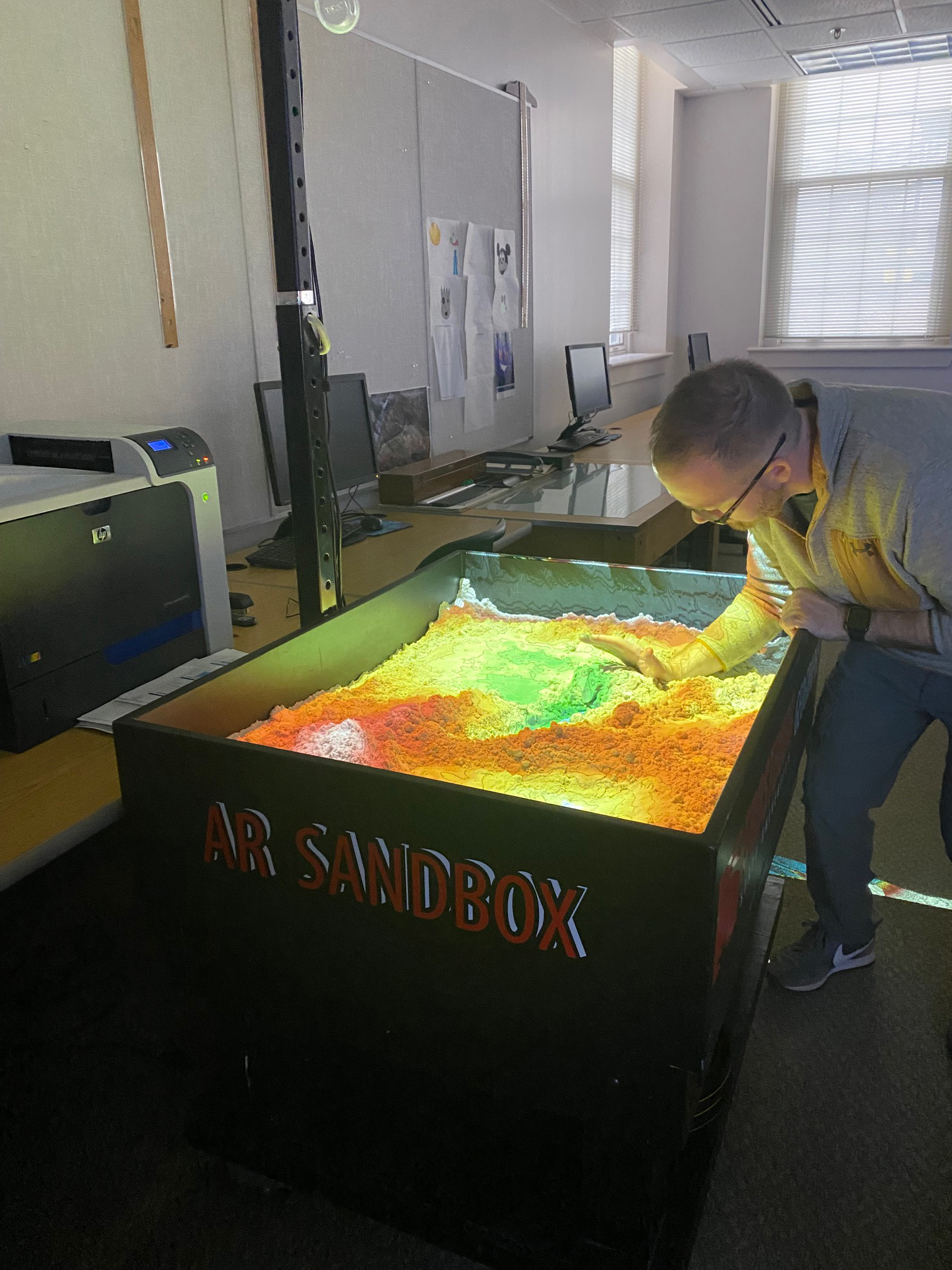FEATURED STORY
Playing in the Sand
BY MIA CROSS M'03
Most of us outgrow the joy of playing with sand. But at Frostburg State University, geography students and professors have expanded that creative fun with an added grain of education.
FSU’s geography department knows that science is cool and has incorporated an Augmented Reality Sandbox (ARS) into the classroom to engage students in advanced topography, landscape analysis and map interpretation.

“The Augmented Reality Sandbox is a really cool piece of educational technology,” said Dr. Bill Wetherholt, associate professor in FSU’s geography department. “Geography is such a relevant discipline when it comes to investigating our environment and making sense of the world.”
According to Wetherholt, the original ARS was developed by the UC Davis W. M. Keck Center for Active Visualization in the Earth Sciences through an NSF-funded project on informal science education. Users can create topographic models by shaping sand that is sensed from above, processed by a computer below, allowing a digital projector to cast color-coded elevation information onto the surface of the sand in real time.
In 2017, funding was secured to purchase the necessary hardware to build an ARS for FSU’s Geography Department. Using online resources and instructions made available from the original researchers of an ARS, Wetherholt, along with other geography professors, worked with FSU’s facilities and information technology departments to construct the ARS.
“The joint effort was pretty awesome,” recalled Wetherholt, adding that his department colleagues were instrumental in the process. “Phil Allen was incredibly helpful showing me how to utilize lab fees from our Physical Geography course to fund the purchases needed to piece this thing together. He was also integral to setting up the meetings with facilities and IT.”

Dr. Wetherholt teaching how the AR Sandbox operates.
“Bill told me about the ARS, and I was happy to help expedite his idea to build one for our department,” said Dr. Allen. “I knew which doors he needed to knock on for support and to help the project along.”
The total monetary investment in the ARS was about $3,500. But getting the sandbox from concept to classroom wasn’t child’s play.
“The first step was sharing the general schematic with FSU’s facilities department to devise a plan for construction,” said Wetherholt.
According to Wetherholt, Mark Williams and Jay Howard were instrumental in building the box as well as adjusting the design when complications arose. After it was constructed, the necessary software needed to be installed. Cue the IT folks.
“IT supported the build of the computer and its required specifications with the help of Alvin Beeman and Brian Lang,” said Wetherholt. The group also employed the help of Associate Geography Professor Tianna Bogart’s husband for his proficiency in Linux. “He was indispensable when it came to troubleshooting software installation and calibration.”
“Overall, the experience of constructing an AR sandbox was challenging, but very rewarding,” said Wetherholt. “This was a group effort from start to finish, and I am incredibly thankful for the hard work of everyone involved.”



The AR Sandbox is used in FSU geography classes as well as at the after school program for Allegany County Public Schools.
Construction on the ARS was completed in 2018 and has since been deployed in several geography classes, at the Allegany County Public Schools after school program for middle school students, and was voted the FSU Majors Fair Most Interactive Display. Without yet realizing the full potential of Frostburg’s AR sandbox, it has already caught the attention of the campus community.
“That’s the most exciting thing yet,” Wetherholt added.
